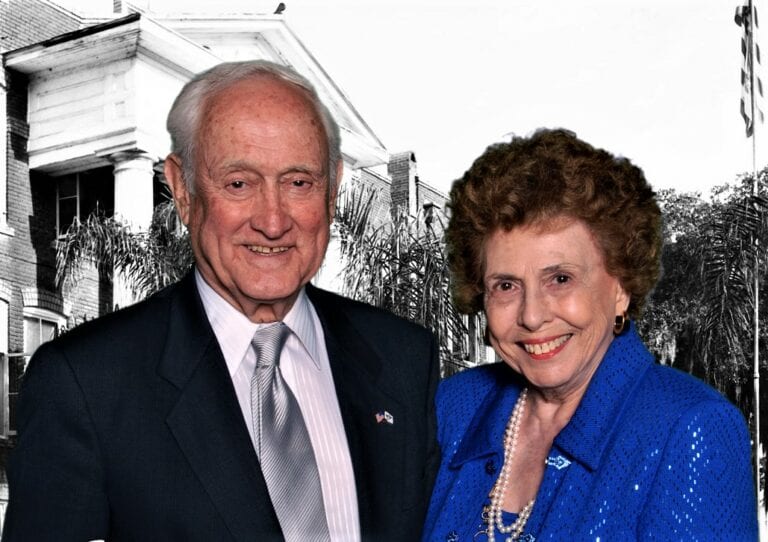
Passing through the Tampa International Airport, Airside C, you may have noticed a looming sculpture of an aviator in full gear. “The Barnstormer” is an eight-foot sculpture of silicon bronze alloy – the work of Plant City native Harrison Wall Covington. He is quoted as having said “Aviators belong to a fraternity that is to be respected and honored.” The airport’s caption states, “Covington’s anonymous barnstormer evokes the heroic spirit of those aviators who symbolize the age of flight.”
Harrison Wall Covington was born in Plant City and raised near the corner of Reynolds Street and Alexander and later North Evers Street. After graduating Plant City High School in 1942, Covington attended the University of Florida but was called to duty in 1943. He went through an intense but curtailed US Army Air Corps flight training course and joined the corps of fighter pilots who were assigned to fly the P-47 Thunderbolt, a large heavy-duty fighter-bomber ground-attack plane active in both the European and the Pacific theaters of WWII.
Covington flew the P-47s in the Pacific – in the Philippines, Guam, and out of other bases, sometimes bringing back a limping plane with a hole blown through its fuselage. After the war, Covington returned to two of the things he loved. He studied art at the University of Florida and married his high school classmate, Jane Langford, who had attended Shorter College in Rome, Georgia, and was now a teacher. Harrison graduated the University of Florida in 1949 and continued into graduate school as he began teaching art at the university. After earning his M.A., he became an Assistant Professor of Art at UF.
Harrison’s father, Edmund DeBerry “Ted” Covington had been in the turpentine business and later owned and operated Plant City Lumber Company on East Alsobrook Street. His mother, Maria, was a schoolteacher. His brother, Edmund D. Covington, “Ted” Jr., also a WWII veteran, went into business with start-up WONN Radio in Lakeland and later into the insurance business. Harrison was passionate about art and teaching and followed that path.
In 1961 Harrison Wall Covington, Jane, and their two sons moved to Tampa, where Harrison led the development of the arts program at the fledgling University of South Florida. He promoted the arts, while applying them enthusiastically, and led the new school to elevate the program to become the USF College of Fine Arts, becoming its Dean.
The USF website carries this citation: “Harrison Covington has had over thirty solo exhibitions and his work is included in over forty public collections and numerous private ones. His honors include a Guggenheim Fellowship awarded in 1964, a Sloan Foundation Grant, and a Presidential Award from USF for Outstanding Teaching. He has also been awarded many research grants and awards for his paintings including selection for exhibition in the Museum of Modern Art.”
Covington formally retired in 1981, teaching part-time and continuing as Dean Emeritus and Professor Emeritus at USF, and working in his studio on Lake Carroll, painting and sculpting. In 2007, the Photo Archives partnered with WUSF-TV in producing the award-winning video, “Plant City Goes to War,” featuring Harrison Covington, his brother Ted Covington, David E. Bailey, Philip Patrinostro, Lonnie Davidson, and John Germany.
In 2008 the committee on the erection of a Veterans Monument in Plant City contacted Covington about doing the sculpture. His work was halted by a health problem, but the five-foot model of that sculpture proudly sits in a private yard in Plant City. And in May 2012 Covington led the unveiling of the first of the J. Seward Johnson sculpture exhibitions in Plant City.
Regretfully, his beloved Jane passed away February 12, 2020. Harrison celebrated his 97th birthday April 12, 2021 and died April 24, 2021.
Harrison and Jane Langford Covington have been much appreciated supporters of the Photo Archives & History Center and have donated many photos and wonderful stories.
